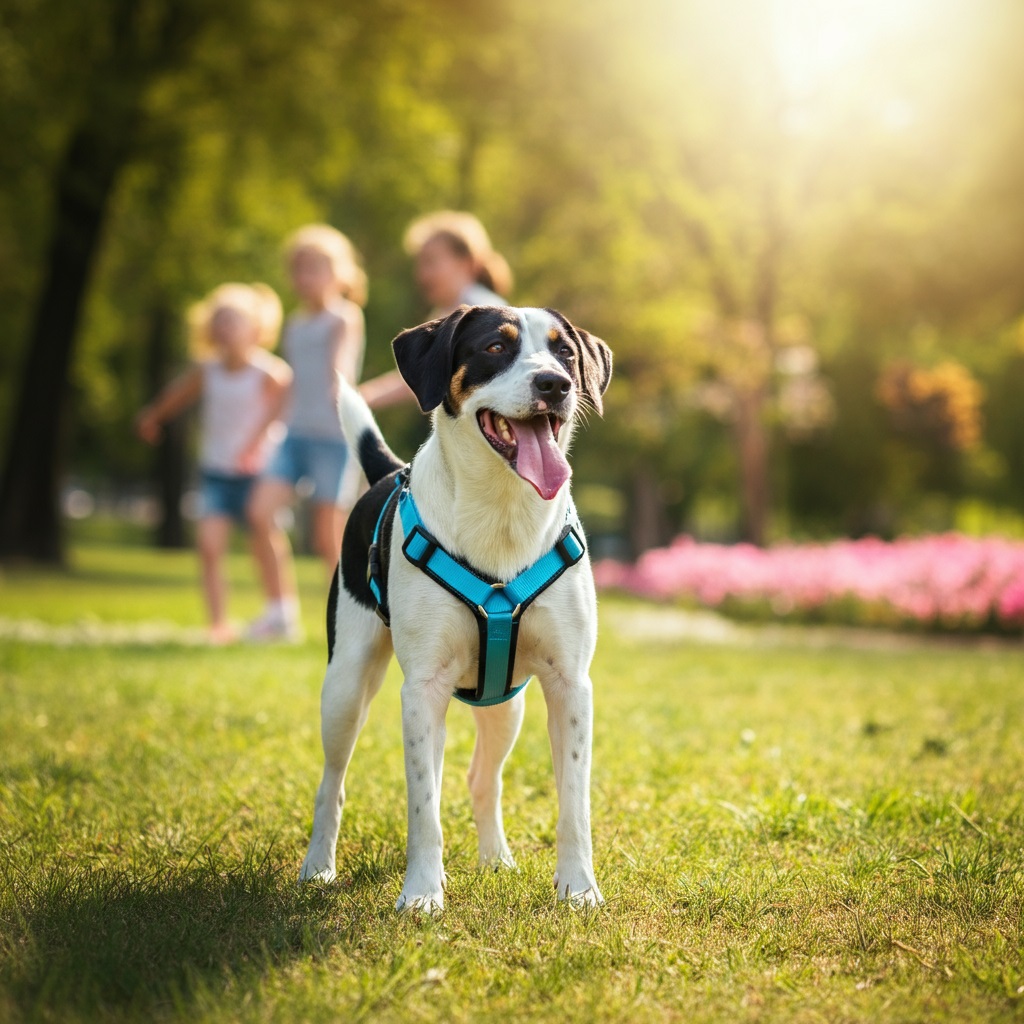
Choosing the right accessory to keep your dog safe, secure, and comfortable is one of the most important decisions for any pet owner. The debate between using a harness or a collar is one that often divides opinions, and for good reason. Each has its own set of benefits and drawbacks depending on your dog’s breed, size, behavior, and specific needs.
In this blog, we’ll explore the pros and cons of collars and harnesses while helping you determine the best option for your furry friend. Whether you’re walking a strong, active dog or caring for a small, delicate pup, this guide will help you make an informed decision.
Dog Collars Pros and Cons
The traditional collar is a go-to option for many dog owners. Practical and familiar, collars can carry ID tags and are easy to put on and take off. But they’re not without limitations.
Advantages of Collars
- Convenient for Everyday Use
A collar is lightweight and compact, making it comfortable for dogs to wear all day. It’s ideal for holding identification tags, vaccination records, and even GPS trackers to help locate your furry friend if they wander off.
- Training and Control
Certain collars, such as martingale collars, are specifically designed for training purposes and help keep dogs from slipping out without causing them harm.
- Variety of Styles
With a wide range of designs, materials, and patterns available, dog collars allow you to reflect your pet’s personality while still maintaining functionality.
Disadvantages of Collars
- Risk of Injuries
For dogs that pull on the leash, regular collars can apply dangerous pressure to their necks. This can lead to injuries such as tracheal damage or stress on their cervical spine.
- Not Suitable for Certain Dog Breeds
Smaller or flat-faced breeds, like pugs and French bulldogs, are more prone to breathing problems. For these dogs, applying pressure to the neck can exacerbate existing health issues.
Dog Harnesses Pros and Cons
Harnesses are becoming increasingly popular, especially for high-energy or hard-to-control dogs. Unlike collars, a harness distributes pressure more evenly across the dog’s body, making it a safer alternative in many cases.
Advantages of Harnesses
- Safety First
Harnesses are designed to eliminate pressure from the neck, making them ideal for dogs prone to pulling or breeds with delicate throats. They’re particularly useful for small breeds and brachycephalic (flat-faced) dogs.
- Better Control
Harnesses provide more control over your dog’s movement, which can make walks far more manageable, especially with large or overly enthusiastic pups.
- Reduced Pulling Behavior
With a front-clip harness design, you can gently discourage pulling behavior by redirecting your dog’s momentum. This is especially useful for training young or energetic dogs.
- Great for Adventure Dogs
If your furry friend loves the great outdoors, a harness is a better option. Many harnesses come with attachments for hiking gear, car seat connectors, or even adventure packs.
Continues after advertising
Disadvantages of Harnesses
- Less Convenient
Unlike collars, harnesses often take more time to put on and adjust properly. If your dog wiggles or is overly excited, the process could become a chore.
- Restricted Movement
A poorly fitted harness may restrict your dog’s natural movement, leading to discomfort, chafing, or even joint strain over time.
- Not Ideal for Full-Time Wear
Harnesses are bulkier compared to collars, making them less comfortable for long periods of wear. They’re great for outdoor use but can be overkill for lounging around at home.
Which is Better for Your Dog
Choosing between a collar and a harness depends on various factors. Here’s a quick guide to help you decide based on your dog’s needs.
Factors to Consider
- Size and Breed
Smaller dogs and brachycephalic breeds are better suited to harnesses due to their delicate necks and airway issues. Larger, non-pulling breeds might do just fine with collars, provided they’re not prone to pulling.
- Behavior and Training
If your dog is still in training or tends to pull on the leash, a harness is typically safer and more efficient. However, well-behaved dogs that walk gently alongside you may enjoy the simplicity and comfort of a collar.
- Activity Levels
For active dogs who love exploring, hiking, or running, a harness offers the safety and versatility needed for outdoor adventures. For indoor pups or less active dogs, a collar is often sufficient.
- Health Conditions
Dogs with any existing neck or back conditions should avoid collars that can exacerbate injuries. Instead, opt for a harness that distributes pressure evenly.
Training Tips for Using Collars or Harnesses
Regardless of your choice, proper training is key to ensure your dog’s safety and comfort during walks.
- Introduce Gradually: If your dog has never worn a harness or collar before, allow them to sniff and get accustomed to it before your first walk.
- Adjust Properly: Ensure a snug fit to avoid slipping out or chafing. Use the two-finger rule to check that the harness or collar isn’t too tight or too loose.
- Reward Good Behavior: Positive reinforcement with treats or praise goes a long way in teaching your dog to walk nicely on a leash.
Popular Options for Collars and Harnesses
Here are some top-rated options to consider when shopping for your pet’s next accessory.
- Best Collars
- Martingale Collar for Training
- Breakaway Collar for Safety
- Rolled Leather Collar for Style and Comfort
- Best Harnesses
- Front-Clip No-Pull Harness for Training
- Step-In Harness for Smaller Breeds
- Adventure Harness with Extra Pockets for Outdoor Activities
Read More👉 Top 10 Smartest Dog Breeds and Why They Shine
Making the Final Choice
Ultimately, both collars and harnesses are excellent tools for walking your dog and keeping them safe. The best option depends on your dog’s specific needs, behavior, and lifestyle.
If you’re still unsure, consult with your veterinarian or a professional dog trainer to find the perfect fit for your pup.



